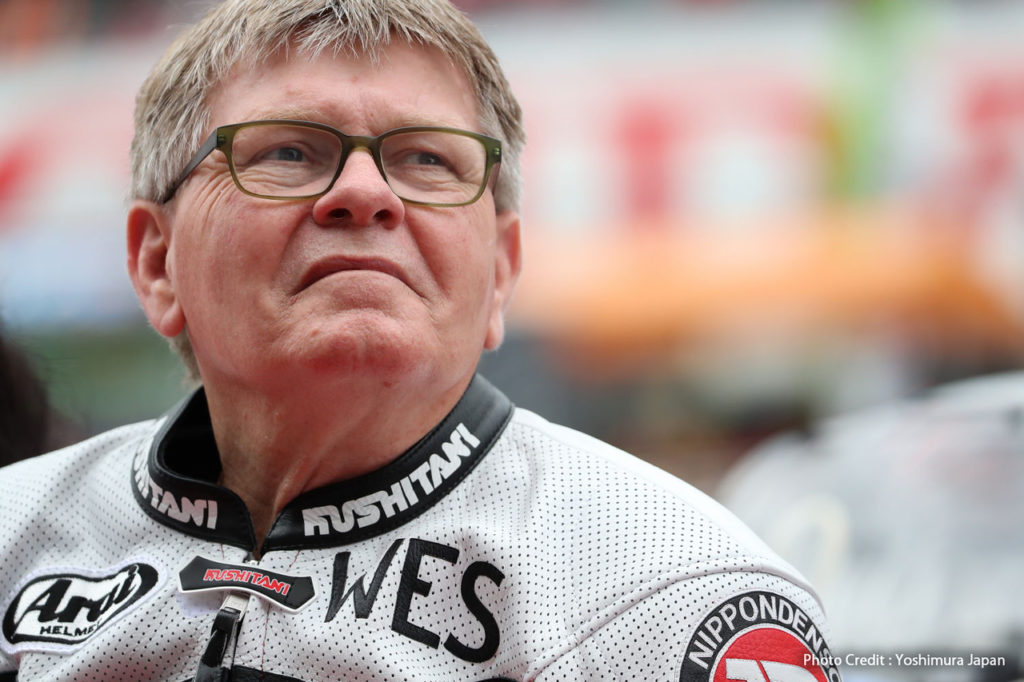
Lane filtering, also known as lane splitting, where motorcycles share lanes with cars and trucks to reduce traffic congestion, is a widespread practice around the world. Two studies in 2014 showed that the practice is safe.
In the U.S., only California allowed the practice for many years, though it was not legally sanctioned until 2016. In 2018, Utah became the second state to legally recognize lane filtering, and Montana passed a similar law in 2021. Arizona is now the fourth state to allow lane filtering.
The following is a press release issued by the American Motorcyclist Association:
Arizona Gov. Doug Ducey has signed a law legalizing lane filtering after the bill cruised through both the Senate and House chambers with strong bipartisan support. The law now puts the state in the company of California, Utah, and Montana.
The passage of Senate Bill 1273, sponsored by Sen. Tyler Pace (R-Mesa District 23) and championed by ABATE of Arizona, allows riders to cruise slowly between lanes at speeds no faster than 15 mph if the other vehicles are stopped. Modeled off Utah’s legislation, the practice can only be done on roads posted at 45 mph or less. It does not allow riders to pass on the shoulder or on the median.
“This law has been four years in the making,” said Michael Infanzon, legislative director for ABATE of Arizona. “But we had a really great sponsor for the bill this year with Senator Pace. He is an active motorcycle rider and it was key to have someone who understood the danger of being rear-ended. This is all about safety and nothing more than part of the plan to reduce motorcycle fatalities in Arizona.”
With the law set to be in effect 90 days after adjournment, likely to be mid-September, ABATE of Arizona and the Arizona Motorcycle Awareness and Safety Foundation will be working with the Governor’s Office of Highway Safety and the Department of Public Safety to educate riders and the public on the new legislation.
“Once the legislation was sent to the Governor’s desk, we started collaborating with the government to get PSAs and TV spots moving,” said Infanzon.
According to the Arizona Department of Transportation’s most recent data, 30 percent of all motorcycle crashes in 2020, including 11 out of 106 fatal motorcycle collisions, were the result of rear-end collisions.
“ABATE of Arizona put up a strong showing to successfully get this law signed,” said the American Motorcyclist Association’s (AMA) Western States Representative Nicholas Haris. “It is a welcome sight to see more states adopting commonsense safety laws that protect motorcyclists when they are most vulnerable to a collision. The AMA is committed to working with riders nationwide on efforts to pass similar legislation and educating the public about its benefits.”
Meanwhile, Utah has extended the authorization for motorcyclists to lane filter for an additional five years to allow state officials to review the practice and gather data on its safety benefits. With the passage of H.B. 10 on March 22, the state is affirming that its initial experience has been a success worth continuing.
“With the signing of H.B. 10 Utahans have recognized the benefits of lane filtering,” said AMA On-Highway Government Relations Manager Tiffany Cipoletti, “which allows motorcyclists the choice to filter in traffic when it is safe to do so.”
Utah legalized lane filtering in 2018 with the initial bill and now the extension sponsored by state Rep. Walt Brooks (R-St. George District 75).
“I am very happy to have the support of the Department of Public Safety and of the legislature to extend lane filtering for an addition five years,” said Rep. Brooks. “The original sunset of three years, and dealing with COVID, did not provide the data needed to remove the sunset. I am confident that as riders use lane filtering properly over the next five years, the general public will become familiar with the practice and the data will prove this is a good policy for Utah, and will become permanent.”
Rep. Brooks has been a vocal supporter of the practice as a motorcyclist himself, and has assisted efforts in other states like Arizona to legalize the practice. The AMA is grateful for Rep. Brooks’ support of motorcyclists and the safe practice of lane-filtering.
“We are fortunate to have motorcyclists in elected office like Representative Brooks and Senator Pace,” said AMA Director of Government Relations Michael Sayre. “Brooks’ firsthand experience as a rider and work to gain the support of law enforcement in Utah were very important and have helped lay the groundwork for success in other states.”
The AMA endorses lane splitting, given the long-term success in California and the University of California-Berkeley research study showing that the practice enhances motorcycle safety. The AMA will assist groups and individuals working to bring legal lane splitting and/or filtering to their state.
“As lane-splitting support continues to gain traction across the country,” the AMA’s Cipoletti said, “we are eager to help more motorcyclists engage their state legislatures on this issue.”
Currently, the AMA is actively engaged in supporting a lane filtering bill in Oklahoma (H.B. 2667), too.
The post Arizona Passes Lane Filtering Law first appeared on Rider Magazine.
Source: RiderMagazine.com

